Mastering CX Trends with Practical Solutions in 2025

In 2025, customer experience is no longer just a buzzword—it’s the backbone of business success. Think about this: US companies lose a staggering $75 billion every year due to poor service. On the flip side, businesses that focus on improving customer experience can boost their revenue by 10-15%. That’s a game-changer, right?
To stay ahead, you need to embrace customer-driven innovation. Technologies like AI, voice interaction, and augmented reality are reshaping the digital customer experience. Imagine a world where your customers’ needs are anticipated before they even ask. From proactive engagement to seamless omnichannel integration, these advancements are helping businesses like yours create unforgettable experiences.
Brands like Sobot are already setting the gold standard in CX trends 2025. With tools that unify communication and enhance engagement, they’re paving the way for smarter, customer-centric strategies.
Understanding Customer Experience and Its Importance
What is customer experience?
Customer experience is how your customers perceive their interactions with your brand. It’s not just about solving problems—it’s about creating moments that matter. Every touchpoint, from browsing your website to chatting with support, shapes their overall impression.
Think of it like this: when you walk into a store, the friendly greeting, the ease of finding what you need, and the checkout process all contribute to your experience. Online, it’s the same. Whether it’s a chatbot answering questions instantly or a seamless mobile checkout, these interactions define how customers feel about your business.
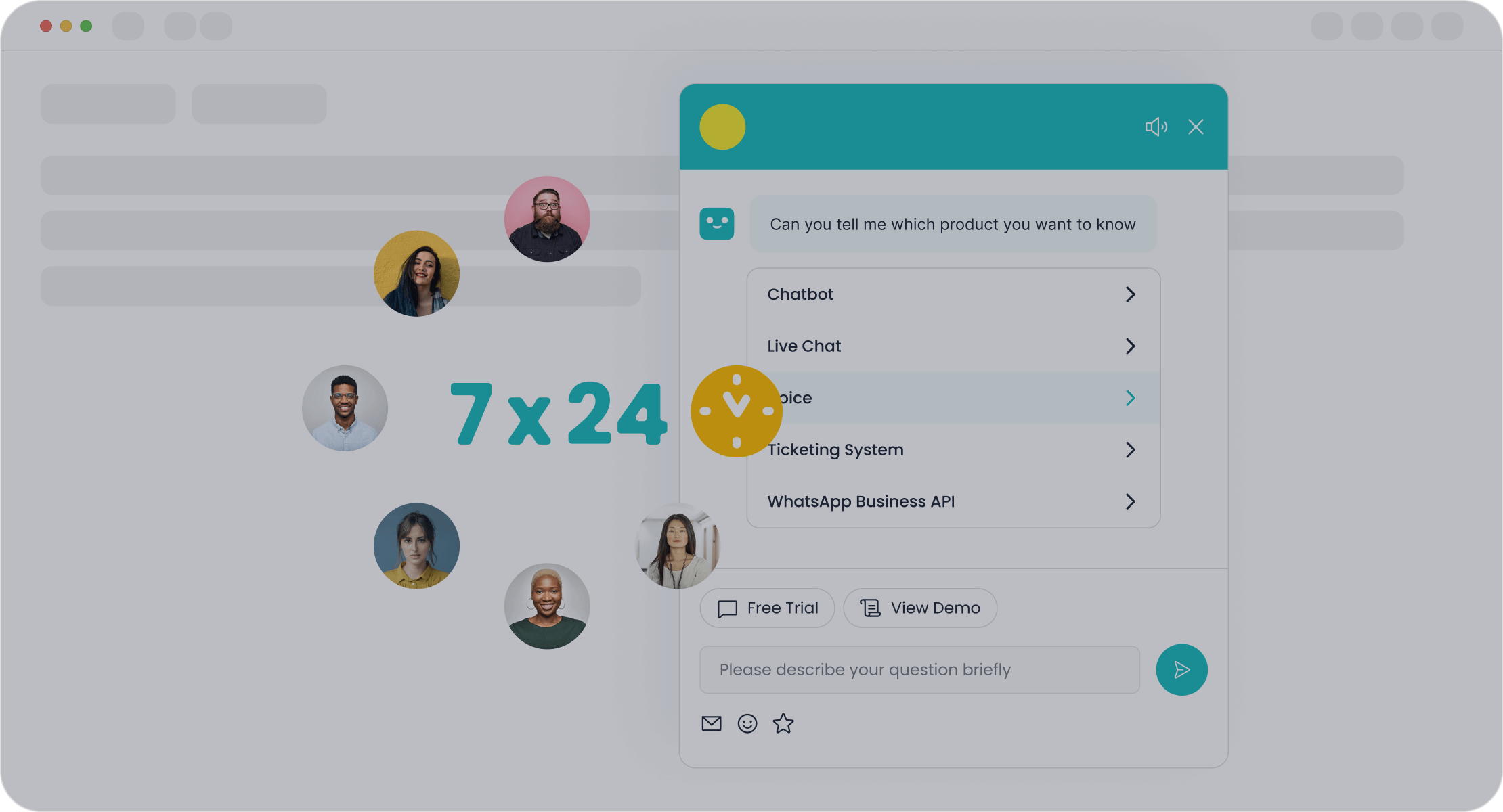
Sobot’s solutions, like its AI-powered chatbot, help businesses deliver exceptional customer experiences by automating responses and providing 24/7 support. This ensures your customers always feel valued, no matter when they reach out.
Why customer experience is a competitive advantage in 2025
In 2025, customer experience isn’t just important—it’s your secret weapon. Why? Because customers are demanding more. They want speed, convenience, and personalization. If you can deliver consistent customer experience across all channels, you’ll stand out.
Here’s the reality:
- 1 in 3 customers will leave a brand they love after just one bad experience.
- 74% of consumers are likely to make a purchase based on experience alone.
- Companies excelling in customer experience outperform competitors by around 80%.
Exceptional customer experience builds trust and loyalty. It’s not just about keeping customers happy; it’s about proving your value. As one expert puts it, “2025 is the year CX leaders are being asked to prove it—ROI, retention, revenue.”
Sobot’s omnichannel tools unify communication, ensuring your customers enjoy seamless interactions. Whether it’s through WhatsApp, live chat, or voice calls, you can deliver the kind of experience that keeps them coming back.
The impact of consistent customer experience on brand loyalty
Consistency is the glue that holds customer loyalty together. When your customers know they’ll get the same great service every time, they’ll stick around. Research shows that highly satisfied customers are twice as likely to return and recommend your brand compared to those who are merely satisfied.
Here’s what consistency can do:
- 90% of highly satisfied customers say they’re likely to return and recommend your brand.
- Financial metrics, like Customer Lifetime Value (CLV), show how loyalty drives profitability.
- Engagement metrics, like Repeat Purchase Rate (RPR), highlight how consistency boosts repurchase likelihood.
Sobot’s AI solutions ensure consistent customer experience by automating repetitive tasks and providing accurate, personalized responses. This frees up your team to focus on building deeper connections with your customers.
Key CX Trends in 2025
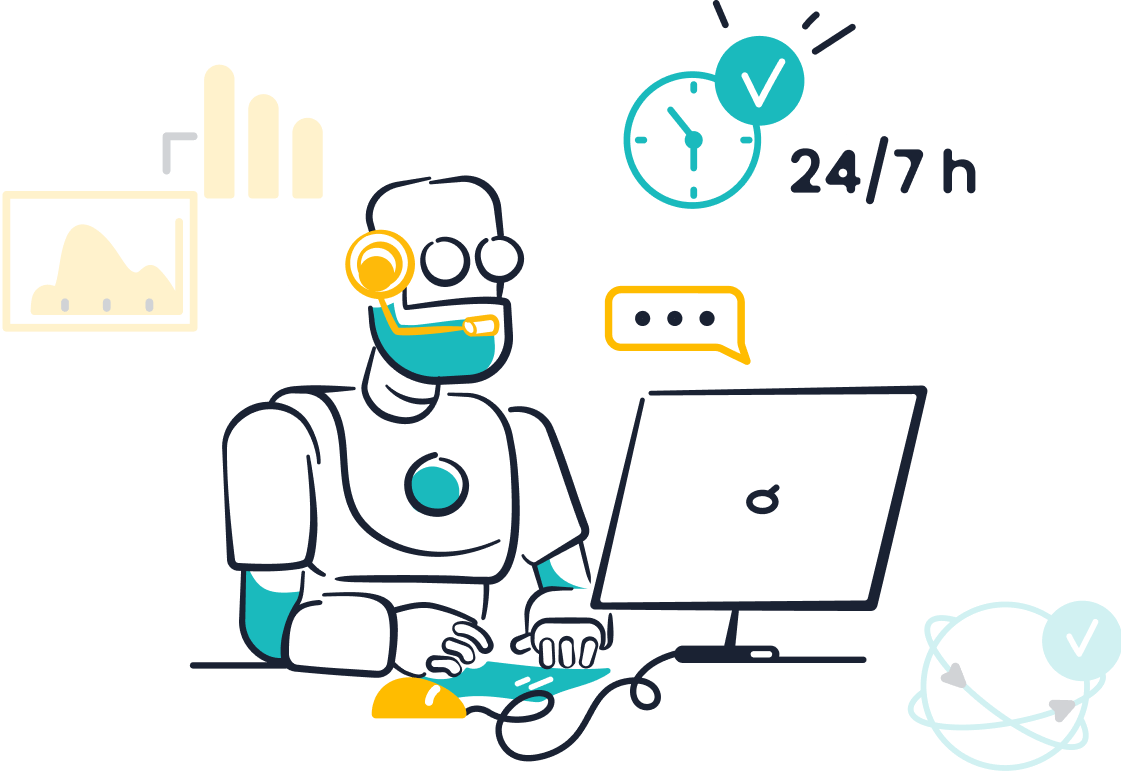
Personalization at scale: Meeting individual customer needs
In 2025, personalization isn’t just a nice-to-have—it’s a must. Customers expect brands to know them, understand their preferences, and deliver tailored experiences. This is where personalization at scale comes into play. It’s about using technology to meet individual needs without sacrificing efficiency.
Why does this matter? Because personalized experiences drive results:
- A study by Campaign Monitor revealed a 760% increase in email revenue from personalized campaigns.
- McKinsey found that 78% of customers are more likely to make repeat purchases from companies using personalization.
| Benefit | Evidence |
|---|---|
| Higher Conversion Rates | Personalized marketing messages lead to significantly higher conversion rates. |
| Improved Customer Satisfaction | 91% of consumers are more likely to shop with brands that provide relevant offers. |
| Increased Revenue | Personalization can deliver five to eight times the ROI on marketing spend. |
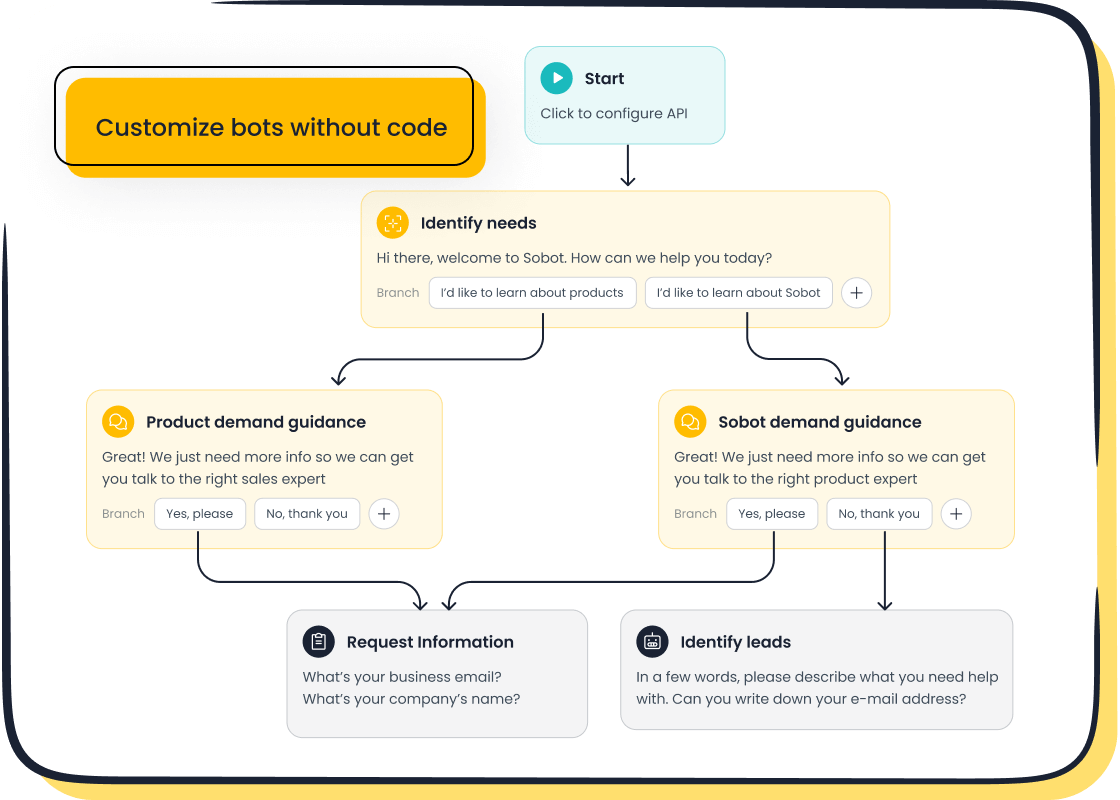
Sobot’s AI-driven personalization tools make this achievable. For instance, its AI Chatbot uses real-time intent analysis to provide smart self-service and proactive messaging. This not only boosts conversions by 20% but also ensures a seamless user experience across channels.
When you personalize at scale, you’re not just meeting expectations—you’re exceeding them. And that’s how you build loyalty in a competitive market.
AI and automation: Transforming customer interactions
AI and automation are revolutionizing how businesses engage with customers. By 2025, 95% of customer interactions will involve AI in some form, according to AI Business. This shift isn’t just about efficiency—it’s about creating meaningful, timely connections.
Here’s what AI and automation bring to the table:
- 65% of consumers are willing to use AI for services (SurveyMonkey).
- Businesses using AI see a 15% increase in personalization-driven revenue (McKinsey).
- Sobot’s AI solutions reduce resolution time by 50% and operational costs by 68%, while improving first response time by 37%.
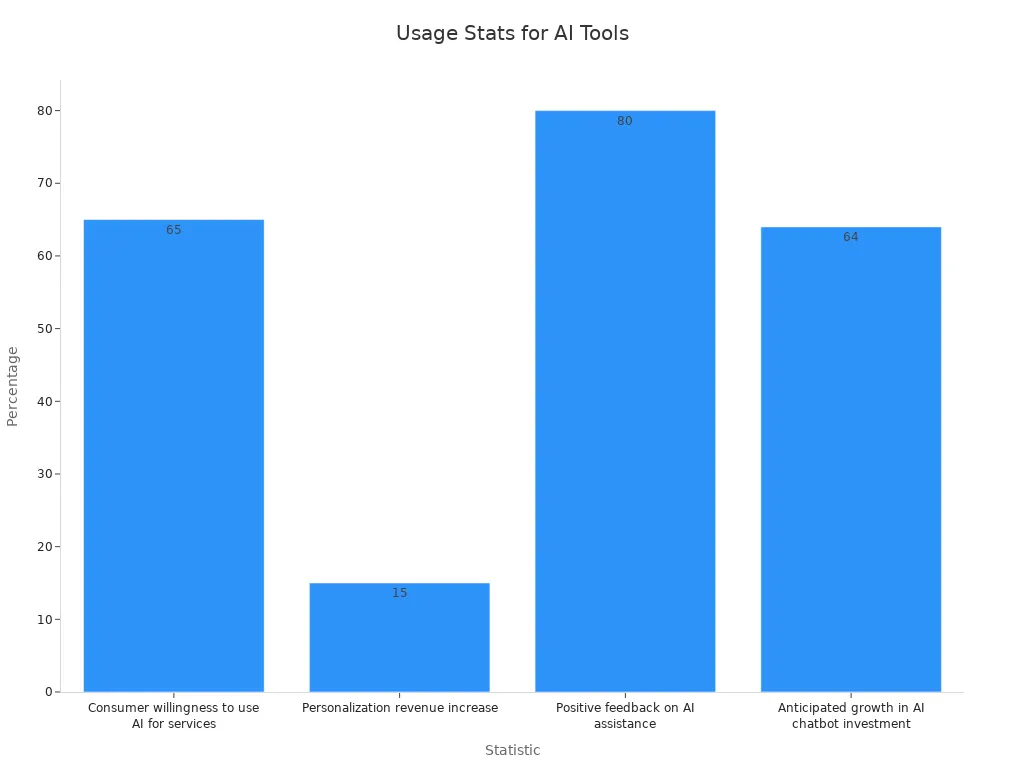
Sobot’s AI Chatbot is a prime example of how automation transforms customer interactions. It operates 24/7, handles repetitive queries, and assists agents with complex issues. This ensures consistency in service while freeing up your team to focus on high-value tasks.
AI isn’t replacing the human touch—it’s enhancing it. By automating the mundane, you can deliver faster, more personalized support that keeps customers coming back.
Omnichannel strategies: Delivering a seamless customer journey
Today’s customers don’t stick to one channel. They might start on social media, move to live chat, and finish with a phone call. That’s why an omnichannel strategy is essential. It ensures a seamless customer journey, no matter where or how they interact with your brand.
An effective omnichannel experience does more than connect channels—it connects the entire customer journey:
- Businesses using omnichannel tools see higher engagement and retention rates.
- CRM and data analytics provide a comprehensive view of the buyer’s journey, enhancing the overall experience.
- A unified approach across platforms leads to increased sales and customer loyalty.
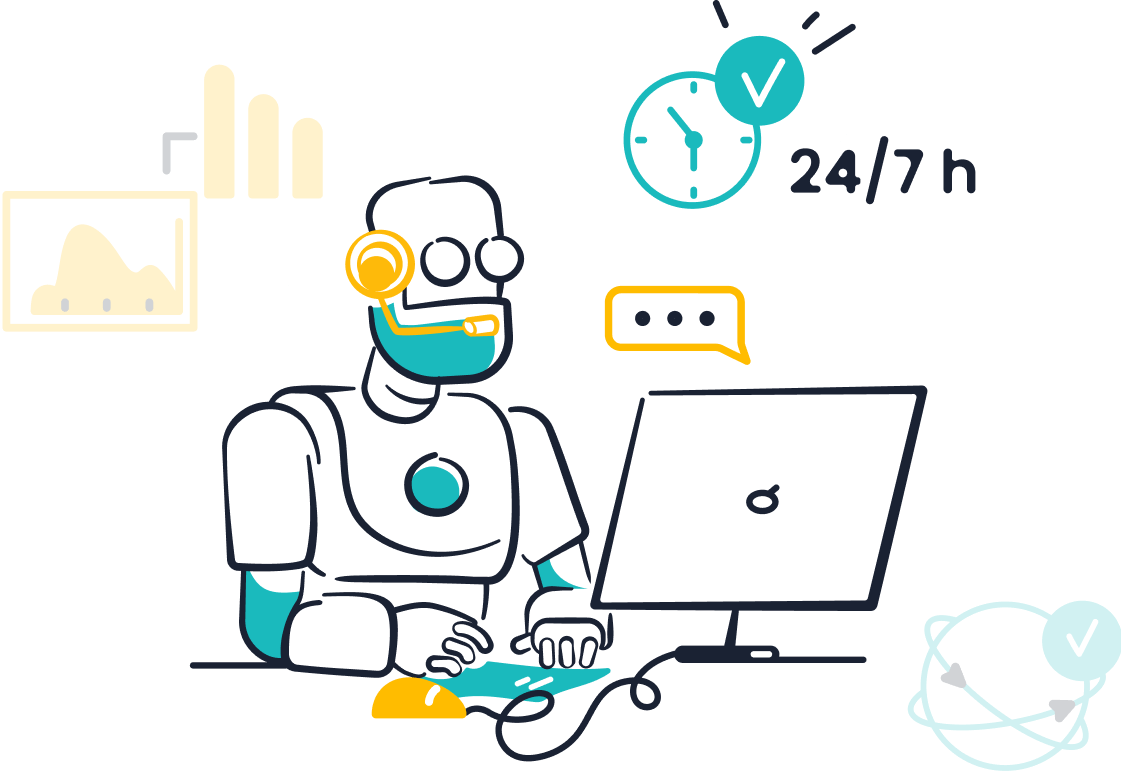
Sobot’s omnichannel solutions make this possible. Its platform integrates communication channels like WhatsApp, live chat, and voice calls into one workspace. This ensures consistency at every touchpoint, creating a seamless customer journey that builds trust and satisfaction.
When you adopt an omnichannel strategy, you’re not just meeting customers where they are—you’re guiding them through a cohesive, enjoyable experience. And that’s what sets you apart in 2025.
Proactive support: Predictive analytics and real-time solutions
Imagine knowing what your customers need before they even ask. That’s the power of proactive support. In 2025, businesses are using predictive analytics and real-time solutions to anticipate issues and solve them before they escalate. This approach doesn’t just improve efficiency—it builds trust and loyalty by showing customers you’re always one step ahead.
Predictive analytics models are already transforming industries. Here’s how some companies are leading the way:
| Company | Predictive Analytics Model Used | Purpose |
|---|---|---|
| Amazon | Predictive analytics to anticipate shipping issues | Notifies customers of potential delays proactively, enhancing customer experience. |
| Verizon | Analyzes live network traffic and hardware data to detect service disruptions | Identifies outages before customers notice, often resolving issues without complaints. |
| Netflix | Behavioral analytics for content recommendations and automatic adjustments during buffering issues | Keeps users engaged and improves retention by proactively addressing potential viewing issues. |
You can see how these strategies create a consistent customer experience. By addressing problems before they arise, businesses reduce frustration and keep customers happy.
Sobot’s AI-powered solutions make proactive support a reality for businesses of all sizes. For example, its AI Chatbot uses real-time intent analysis to predict customer needs and provide instant solutions. Whether it’s resolving a query or offering a product recommendation, the chatbot ensures your customers always feel supported.
Proactive support isn’t just about solving problems—it’s about creating moments of delight. When you anticipate your customers’ needs, you show them you care. And that’s how you build loyalty in a competitive market.
Sustainability in CX: Aligning with customer values
Sustainability isn’t just a trend—it’s a priority. Customers today want to support brands that align with their values. In fact, sustainable practices can significantly impact customer loyalty and lifetime value.
- Customers are more likely to trust brands committed to sustainability, fostering emotional connections that enhance loyalty.
- Unilever’s Sustainable Living Brands grew over 50% faster than other brands, accounting for a significant share of the company’s sales growth.
When you integrate sustainability into your customer experience strategy, you’re not just helping the planet—you’re building trust. Customers notice when your actions match their values, and they reward you with their loyalty.
Sobot understands the importance of sustainability in CX. Its solutions, like the AI Chatbot, help businesses reduce resource consumption by automating repetitive tasks and streamlining operations. This not only cuts costs but also minimizes environmental impact.
By focusing on sustainability, you’re showing your customers that you care about more than just profits. You’re proving that your brand stands for something bigger. And in 2025, that’s what sets you apart.
Practical Strategies to Enhance Customer Experience
Leveraging Sobot’s Chatbot for 24/7 customer support
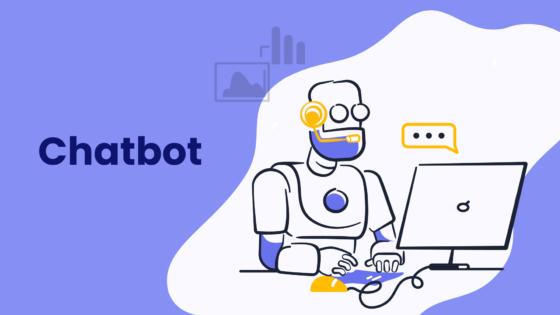
Imagine this: a customer visits your website at midnight with a pressing question. Instead of waiting until morning, they get an instant response. That’s the magic of Sobot’s AI-powered Chatbot. It operates around the clock, ensuring your customers always feel supported, no matter the time.
Why is this important? Because fast, reliable support builds trust and loyalty. Studies show that implementing AI features like chatbots can significantly enhance customer experience by addressing inquiries instantly. Sobot’s Chatbot takes it a step further with its advanced features:
- 24/7 availability: Your business never sleeps, and neither does the chatbot.
- Comprehensive analytics: The Admin dashboard provides over 300 indicators and customizable reports, helping you track engagement and satisfaction.
- Multilingual support: Communicate with customers in their preferred language, breaking down barriers.
By automating repetitive tasks, the chatbot frees up your team to focus on complex issues. This not only improves efficiency but also ensures consistency in service quality. Plus, with real-time feedback capabilities, you can continuously refine your customer experience strategy.
Collecting and analyzing customer feedback for actionable insights
Your customers are your best critics and your greatest allies. Listening to their voices can transform your business. Collecting and analyzing customer feedback isn’t just about solving problems—it’s about driving improvement and innovation.
Here’s how feedback fuels growth:
- It aligns your products and services with customer needs.
- It enhances customer satisfaction and builds trust.
- It drives data-driven decisions, ensuring you’re always on the right track.
- It sparks innovation, helping you stay ahead of the competition.
- It boosts customer retention by showing you care about their opinions.
Take ProManage, for example. By collaborating with a marketing team to improve their app’s user experience, they saw higher adoption rates and increased client satisfaction. This proves that listening to your customers pays off.
Sobot’s omnichannel tools make collecting feedback seamless. Whether it’s through live chat, email, or social media, you can gather insights from every touchpoint. Use this data to refine your customer experience management and create a strategy that truly resonates with your audience.
Streamlining the customer journey with omnichannel tools
Today’s customers expect a seamless experience across all platforms. They might start browsing on their phone, continue on a laptop, and finish with a call. If their journey feels disjointed, they’ll likely look elsewhere. That’s why streamlining the customer journey is essential.
Here’s what the numbers say:
| Statistic | Source |
|---|---|
| 87% of retailers report that customer journey mapping increases sales and marketing ROI | Aberdeen Group, 2021 |
| Companies with well-developed journey maps reduce customer service costs by 15-20% | Gartner, 2022 |
| Journey-mapped customer experiences lead to 50% higher customer retention rates | Forrester, 2023 |
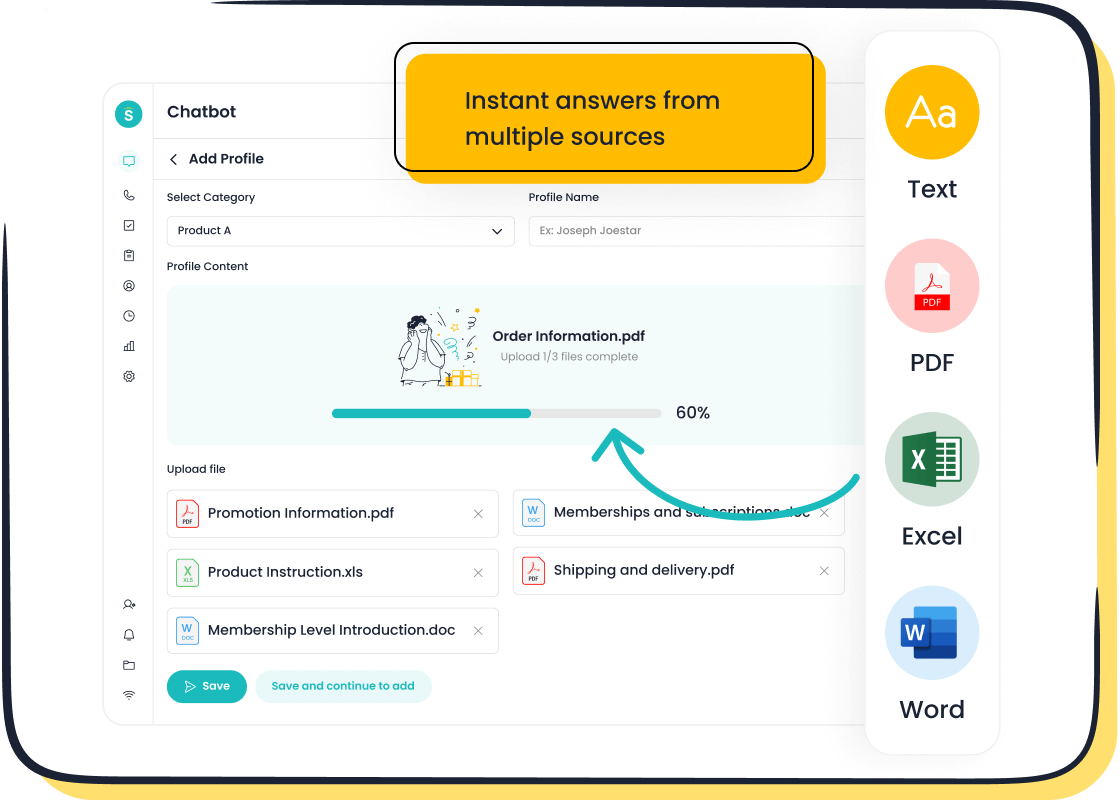
Sobot’s omnichannel solutions simplify this process. By integrating communication channels like WhatsApp, live chat, and voice calls into one platform, you can ensure consistency at every touchpoint. This not only enhances customer experience but also improves operational efficiency.
When you prioritize customer journey mapping, you’re not just meeting expectations—you’re exceeding them. Customers notice the effort you put into creating a smooth, enjoyable experience. And that’s what keeps them coming back.
Training teams to deliver empathetic and proactive service
Your team is the heart of your customer service strategy. When they’re equipped with the right skills, they can turn even the most challenging situations into opportunities to build trust and loyalty. Empathy and proactivity are the two pillars of exceptional customer interactions. But how do you train your team to master these skills?
Start by focusing on empathy. Teach your team to truly listen to customers, understand their emotions, and respond with care. For example, a leading retail company saw a 20% increase in customer satisfaction scores within six months of implementing empathy and active listening training. This shows how small changes can make a big difference.
Proactivity is just as important. Encourage your team to anticipate customer needs and address potential issues before they arise. A telecommunications provider introduced a problem-solving training module and achieved a 30% increase in first contact resolution rates. This kind of training empowers your team to take initiative, which customers appreciate.
Sobot’s solutions can support your training efforts. For instance, the Sobot AI Chatbot handles repetitive queries, giving your team more time to focus on meaningful interactions. It also provides insights into customer behavior, helping your team identify patterns and proactively address concerns. With tools like these, your team can deliver a customer experience that feels personal and thoughtful.
Integrating sustainability into customer service practices
Sustainability isn’t just a buzzword—it’s a value that resonates deeply with today’s customers. They want to support brands that care about the planet. By integrating sustainability into your customer service practices, you can show your commitment to making a positive impact.
Start by reducing waste in your operations. Automate repetitive tasks with tools like Sobot’s AI Chatbot, which operates 24/7 without consuming additional resources. This not only cuts costs but also minimizes your environmental footprint. For example, by streamlining processes, you can reduce paper usage and energy consumption in your contact center.
Next, align your messaging with your sustainability goals. Train your team to communicate your efforts clearly and authentically. Customers notice when your actions match your words, and this builds trust. Highlighting your eco-friendly initiatives during customer interactions can strengthen your brand’s reputation.
Finally, consider how your products or services contribute to sustainability. Sobot’s omnichannel solutions, for instance, help businesses optimize their operations, reducing unnecessary resource use. By adopting such tools, you’re not just improving efficiency—you’re also showing your customers that you care about the bigger picture.
When you integrate sustainability into your customer service strategy, you’re doing more than helping the planet. You’re building a brand that customers feel proud to support. And in 2025, that’s a competitive advantage you can’t afford to ignore.
Real-World Examples of CX Success
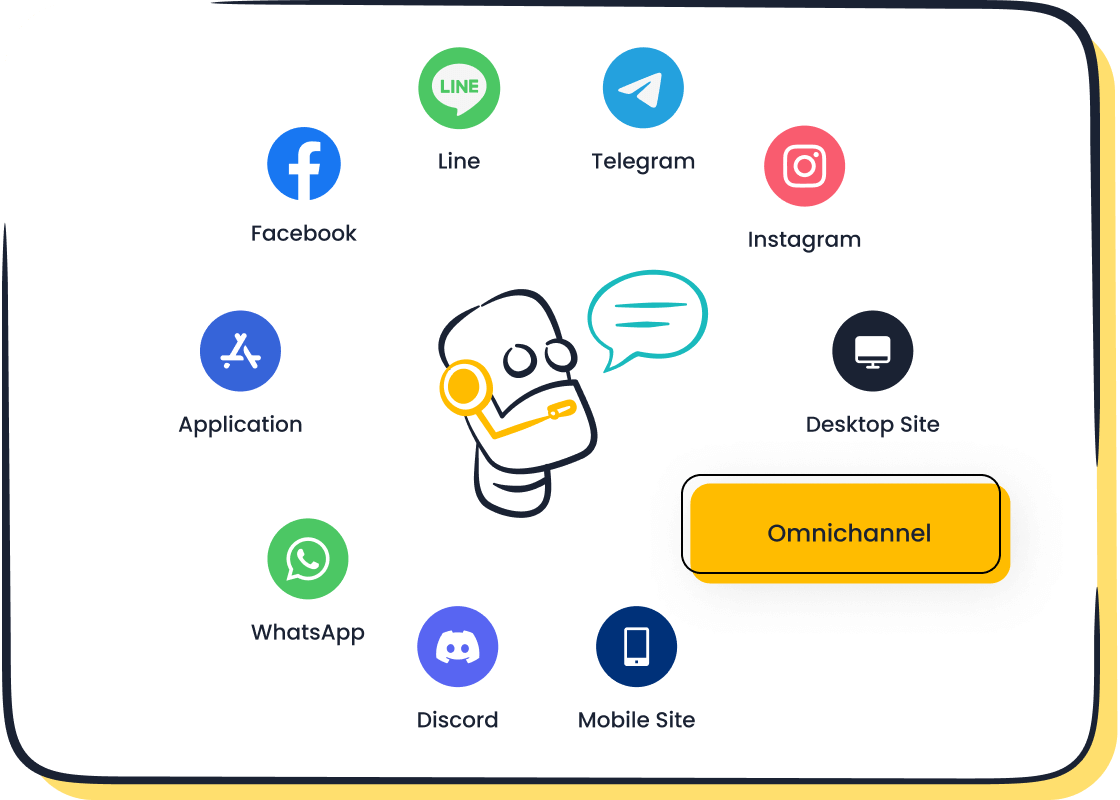
How Samsung improved customer satisfaction with Sobot’s solutions
Samsung, a global leader in technology, faced a challenge familiar to many businesses: managing a high volume of customer inquiries across multiple channels. You know how frustrating it can be for customers when they have to repeat their concerns or wait too long for a resolution. Samsung tackled this head-on by partnering with Sobot to implement an all-in-one contact center solution.
This solution unified communication channels like live chat, voice calls, and WhatsApp into one platform. It also integrated with Samsung’s internal systems, giving agents access to complete customer histories. The result? A 30% boost in agent efficiency and a remarkable 97% customer satisfaction rate. VIP customers even received personalized video support, strengthening loyalty.
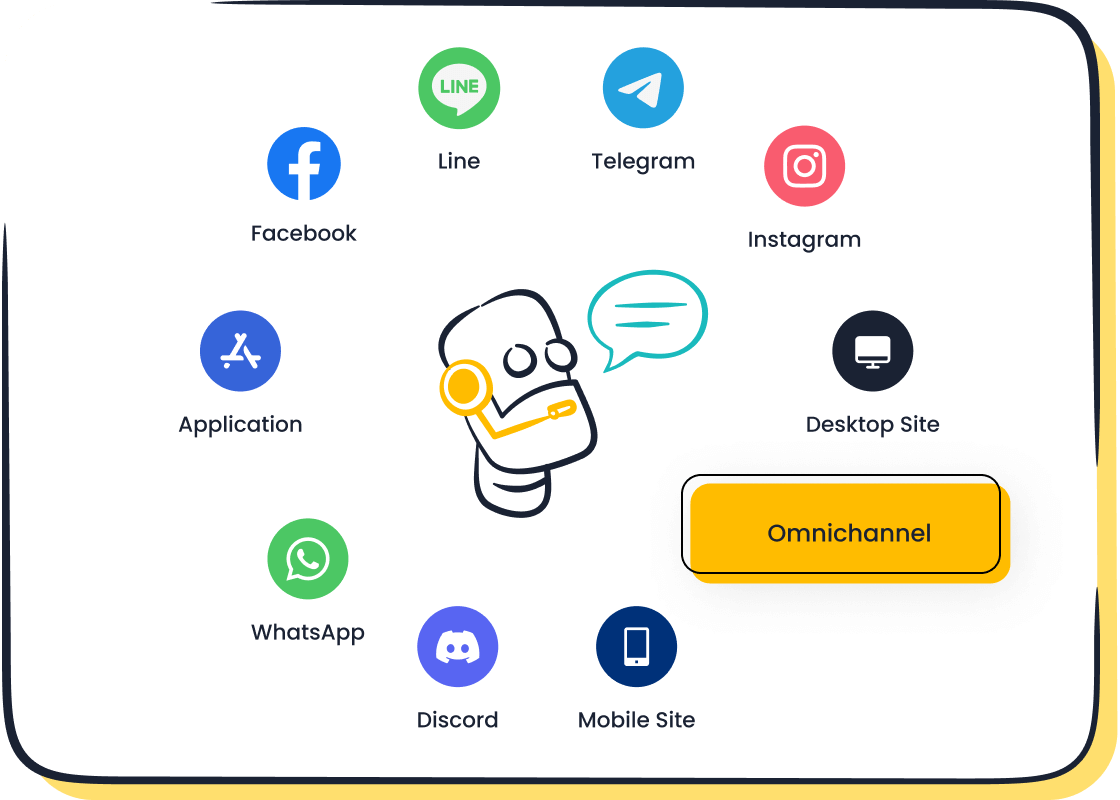
Samsung’s success shows how consistent customer experience can transform your operations. With tools like Sobot’s AI Chatbot, you can automate repetitive tasks, freeing up your team to focus on meaningful interactions.
A retail brand’s use of AI for hyper-personalization
Imagine walking into a store where every product recommendation feels tailored to your preferences. That’s the power of hyper-personalization, and one retail brand used AI to make it happen. By leveraging Sobot’s AI-driven tools, the brand analyzed customer behavior in real time to deliver personalized experiences at scale.
Here’s what they achieved:
- A 20% increase in conversions through proactive messaging and smart self-service.
- Higher engagement rates as customers felt understood and valued.
- Improved customer satisfaction, with feedback surveys showing a 15% boost in overall happiness.
Personalization isn’t just about knowing your customers—it’s about anticipating their needs. Sobot’s AI Chatbot uses real-time intent analysis to recommend products, answer questions, and guide customers through their journey. When you personalize at scale, you’re not just meeting expectations—you’re exceeding them.
A SaaS company’s omnichannel strategy for consistent customer experience
A SaaS company wanted to ensure every customer interaction felt seamless, no matter the platform. They adopted an omnichannel strategy powered by Sobot’s solutions, connecting touchpoints like email, live chat, and social media into one unified system.
| Strategy | Description |
|---|---|
| Consistent Messaging | Maintained clarity and trust across all platforms. |
| Personalization | Tailored interactions based on customer usage patterns. |
| Proactive Issue Handling | Solved problems before they escalated, boosting satisfaction. |
| Data Integration | Unified customer touchpoints for real-time decision-making. |
| Team Coordination | Aligned teams to deliver a cohesive experience. |
| Technology Optimization | Streamlined data collection and reporting for smarter decisions. |
This approach led to a 25% increase in productivity and a 40% reduction in response times. Customers appreciated the consistent customer experience, and the company saw higher retention rates. With Sobot’s omnichannel tools, you can achieve the same results by simplifying workflows and ensuring every interaction feels connected.
A hospitality business’s focus on sustainability in CX
Sustainability is no longer just a buzzword in the hospitality industry—it’s a core value that customers expect. Guests today want more than a comfortable stay. They want to know their choices support a business that cares about the planet. For hospitality brands, focusing on sustainability in customer experience (CX) isn’t just good for the environment—it’s great for business.
Take Six Senses Resorts, for example. They’ve set impressive sustainability benchmarks that show how eco-friendly practices can enhance CX:
| Benchmark | Result |
|---|---|
| Energy Reduction | 32% reduction in energy consumption since 2008 |
| Cost Savings | Estimated $1 billion in utility costs saved |
| Waste Diversion | 90% waste diversion from landfill at Six Senses Resorts |
| Local Sourcing | 30% of food sourced within 50 miles of properties |
| Single-Use Plastics Elimination | 100% elimination of single-use plastics at Six Senses Resorts |
| Carbon Neutral Operations | Achieved at multiple Six Senses locations |
These efforts don’t just reduce environmental impact—they also build trust with guests. When customers see your commitment to sustainability, they’re more likely to choose your brand over others.
So, how can you follow their lead? Start by tracking and quantifying your sustainability improvements. Share your progress transparently with your guests. Celebrate your commitments to reinforce trust and loyalty.
Sobot’s AI-powered solutions can help you streamline operations and reduce waste. For instance, the Sobot AI Chatbot automates repetitive tasks, cutting down on resource consumption while ensuring 24/7 customer support. By integrating tools like these, you can align your CX strategy with sustainability goals.
When you prioritize sustainability, you’re not just meeting customer expectations—you’re exceeding them. And in the hospitality industry, that’s how you turn first-time guests into lifelong advocates.
Overcoming Challenges in Implementing CX Strategies
Addressing common pitfalls in adopting new technologies
Adopting new technologies can feel like a double-edged sword. While they promise to revolutionize customer service, they often come with challenges that can derail your efforts if not addressed.
Here are some common pitfalls businesses face:
- Difficulty in reaching human support teams, leaving customers frustrated.
- Failing to meet customer expectations, which can lead to dissatisfaction and brand switching.
- Lack of active listening by representatives, resulting in miscommunication and poor solutions.
A deeper look reveals even more complex issues:
| Pitfall Description | Evidence Source |
|---|---|
| Personalization-privacy paradox: AI can enhance personalization but may compromise privacy. | California Management Review |
| High capital investment: Implementing AI requires significant financial resources and system redesign. | California Management Review |
| Risk of customer churn: Despite investments, customers may switch brands due to competition. | California Management Review |
To overcome these hurdles, start small. Test new tools like Sobot’s AI Chatbot in specific areas before scaling up. This approach minimizes risks and ensures smoother integration.
Balancing automation with the human touch
Automation is a game-changer for customer service, but it’s not a one-size-fits-all solution. Striking the right balance between automation and human interaction is key to delivering exceptional customer experiences.
| Aspect | Automation Benefits | Human Interaction Qualities |
|---|---|---|
| Availability | 24/7 service availability | Emotional intelligence and empathy |
| Service Quality | Consistent service quality | Adaptive problem-solving and relationship building |
| Wait Times | Reduced wait times | Genuine understanding and personalized responses |
| Cost Efficiency | Cost-effective for routine interactions | Valued in high-stakes situations |
| Customer Preferences | Younger consumers accept automation more | Older demographics prefer human interaction |
Younger customers often embrace automation, while older ones lean toward human interaction. The nature of the issue also matters. Routine tasks like order tracking are perfect for automation, but complex problems require a human touch.
Sobot’s solutions combine the best of both worlds. Its AI Chatbot handles repetitive queries, freeing your team to focus on high-value interactions. This strategic blend ensures efficiency without losing the personal connection customers value.
Ensuring data privacy and security in customer interactions
Data privacy isn’t just a legal requirement—it’s a trust-building tool. Customers want to know their information is safe. Mishandling data can lead to lost trust and revenue.
| Statistic | Source |
|---|---|
| 94% of organizations say their customers would not buy from them if they did not protect data properly. | Cisco |
| 86% of the US general population say data privacy is a growing concern for them. | KPMG |
| 71% of consumers say they would stop doing business with a company if it mishandled their sensitive data. | McKinsey |
| 60% of consumers say they would spend more money with a brand they trust to handle their personal data responsibly. | Truata |
| 48% of users have stopped buying from a company over privacy concerns. | Tableau |
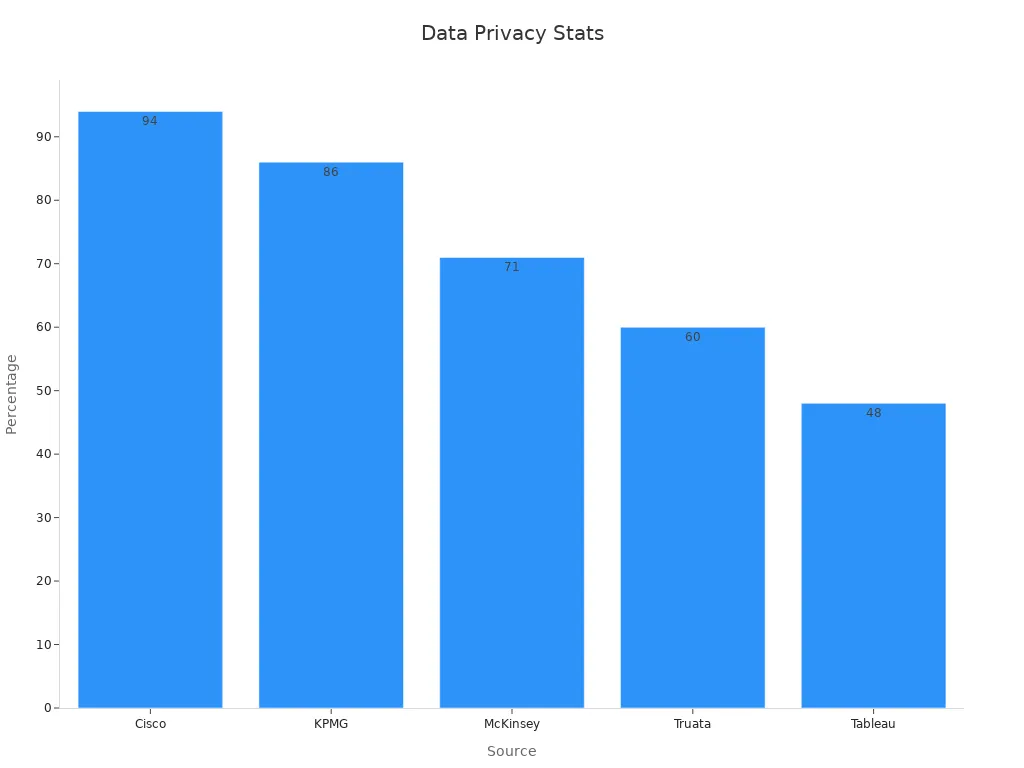
Sobot prioritizes data security with features like GDPR compliance and data encryption. These measures protect sensitive information and build customer trust. By safeguarding data, you’re not just meeting expectations—you’re exceeding them.
Measuring the ROI of customer experience initiatives
How do you know if your customer experience (CX) efforts are paying off? Measuring the return on investment (ROI) of CX initiatives is the key to understanding their impact on your bottom line. It’s not just about tracking numbers—it’s about connecting those numbers to real business outcomes.
Why ROI Matters in CX
Investing in CX isn’t just about making customers happy. It’s about driving measurable results. For instance:
- Upselling and Cross-selling: Satisfied customers are more likely to buy additional products or services, increasing their average spend.
- Lower Support Costs: Addressing customer needs proactively reduces the need for costly support calls.
- Reduced Marketing Costs: Happy customers become your brand advocates, spreading the word and saving you money on advertising.
| Financial Impact | Description |
|---|---|
| Upselling and Cross-selling | Happy customers are more open to suggestions for additional products or services, increasing sales and average spend. |
| Lower Support Costs | Proactively addressing customer needs can prevent costly support calls. |
| Reduced Marketing Costs | Satisfied customers act as advocates, generating free marketing through word-of-mouth and referrals. |
Calculating ROI: A Simple Example
Let’s say you invest $50,000 in a CX initiative. As a result, your profits increase by $100,000. Here’s how you calculate ROI:
- Invested Amount: $50,000
- Increased Profit: $100,000
- ROI Calculation: (100,000 - 50,000) / 50,000 = 100% ROI
This shows how even a modest investment in CX can double your returns.
The Cost of Neglecting CX
Ignoring CX can be costly. Did you know $3.7 trillion in global sales are at risk due to bad customer experiences? Half of customers reduce spending after a poor interaction. That’s why tools like Sobot’s AI Chatbot are game-changers. By automating repetitive tasks and providing 24/7 support, you can enhance customer satisfaction while cutting costs.
Tip: Use analytics tools to track metrics like customer retention, lifetime value, and Net Promoter Score (NPS). These insights help you tie CX efforts directly to revenue growth.
When you measure ROI effectively, you’re not just proving the value of CX—you’re building a roadmap for future success. With solutions like Sobot’s omnichannel tools, you can ensure every dollar spent on CX delivers measurable results.
Mastering customer experience in 2025 means embracing trends like AI, personalization, and sustainability. Strategies such as omnichannel support, proactive service, and customer journey mapping are game-changers. For example, training teams reduced complaint escalations by 30%, while AI-driven personalization boosted sales by 18%.
| Strategy | Impact |
|---|---|
| Leverage AI for Personalization | Increased sales by 18%. |
| Adopt Omnichannel Support | Reduced resolution times by 40%. |
| Map the Customer Journey | Improved retention by 18%. |
| Use Technology to Simplify Interactions | Cut support tickets by 25%. |
Staying adaptable is key. Tools like Sobot’s AI Chatbot simplify interactions, reduce costs, and improve satisfaction rates by 95%.
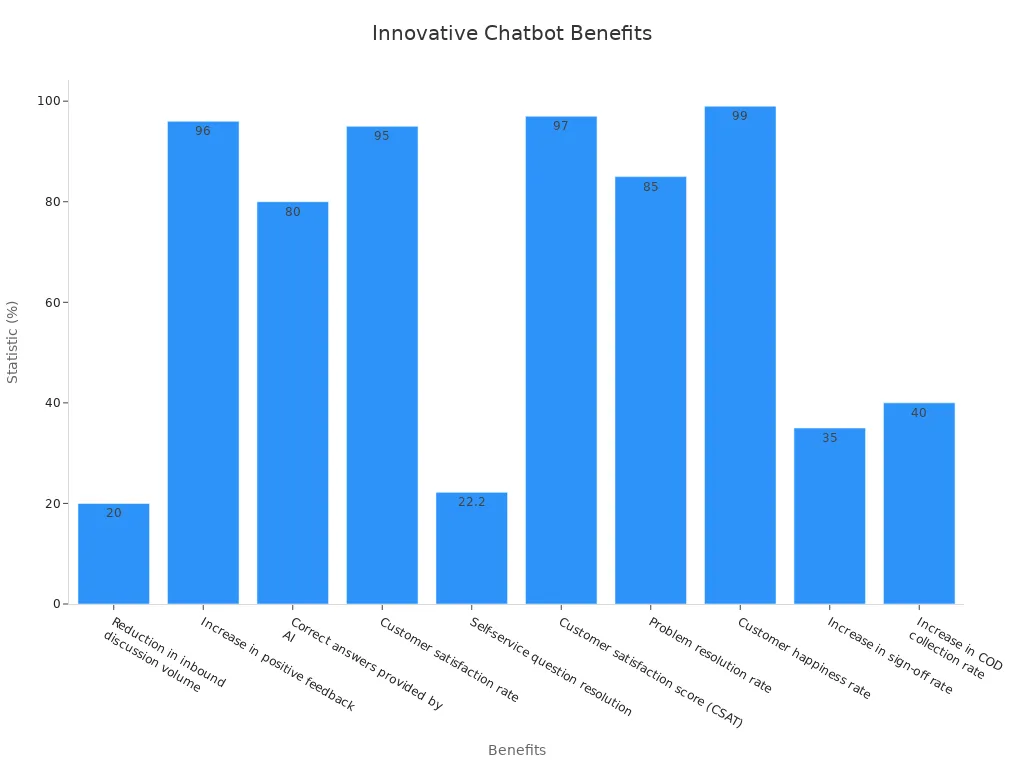
Start implementing these CX strategies today. With Sobot, you’re not just keeping up—you’re leading the way.
FAQ
What is the role of AI in customer experience?
AI enhances customer experience by automating repetitive tasks, providing instant responses, and personalizing interactions. For example, Sobot’s AI Chatbot operates 24/7, solving queries and boosting conversions by 20%. It ensures faster service and frees up your team for complex issues.
How does omnichannel support improve customer satisfaction?
Omnichannel support connects all communication channels into one system, ensuring seamless interactions. Sobot’s tools unify platforms like WhatsApp, live chat, and voice calls. This creates a consistent customer journey, which increases satisfaction and retention rates by up to 50%.
Why is personalization important in 2025?
Personalization builds trust and loyalty. Customers expect brands to understand their needs. Sobot’s AI tools use real-time intent analysis to deliver tailored experiences, boosting engagement and sales. Studies show personalized campaigns can increase email revenue by 760% (Campaign Monitor).
How can businesses measure the ROI of CX initiatives?
Track metrics like customer retention, lifetime value, and Net Promoter Score (NPS). For example, Sobot’s analytics tools provide over 300 indicators to measure CX impact. A simple ROI formula: (Profit Increase - Investment) / Investment. Even small CX investments can double returns.
What makes proactive support essential?
Proactive support anticipates customer needs before they ask. Predictive analytics, like those in Sobot’s AI Chatbot, solve issues in real time. This approach reduces complaints and builds trust. Companies using proactive strategies see higher satisfaction and fewer escalations.
See Also
Discovering Leading Cloud Contact Centers for 2025
Evaluating Best Contact Center Solutions for 2024
A Guide to Implementing Omnichannel Contact Center Solutions